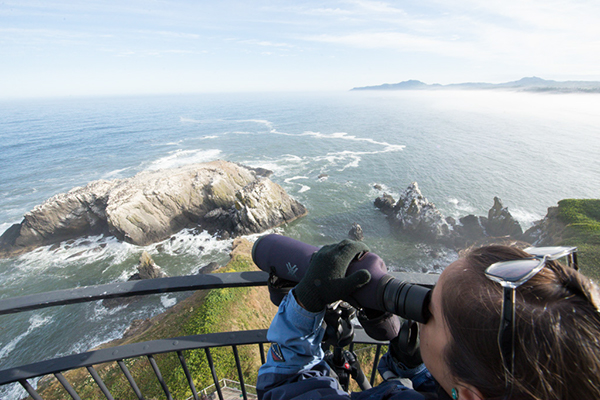Fish-eating seabirds like the common murre — which nest in the rocky intertidal zones along the coast — can give scientists clues to the status of native finfish by how they behave.


Fish-eating seabirds like the common murre — which nest in the rocky intertidal zones along the coast — can give scientists clues to the status of native finfish by how they behave.

The marine reserve off Cape Perpetua served as a laboratory for Oregon college students in April 2014.

It seemed that Kyle Neumann had a dream job: video broadcasting for the Portland Timbers. But something kept nagging at him. “For me, it just wasn’t fulfilling a higher purpose,” says the Oregon State University senior.

Few places are as hot as 6,000 degrees Centigrade: the surface of the sun, the center of the Earth, the heart of a laboratory device at Oregon State University.

Livestock that have encountered wolves experience stress that may affect their health and productivity.

In Antarctica, when you sedate a 1,000-pound Weddell seal, it can take a while for the animal to settle down.